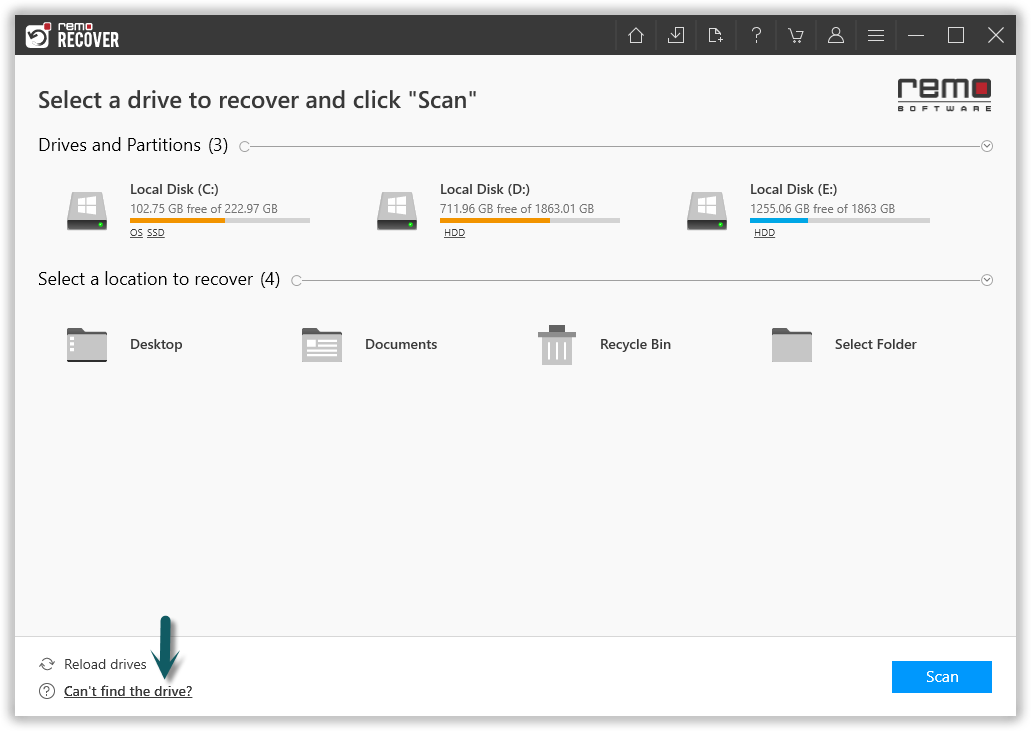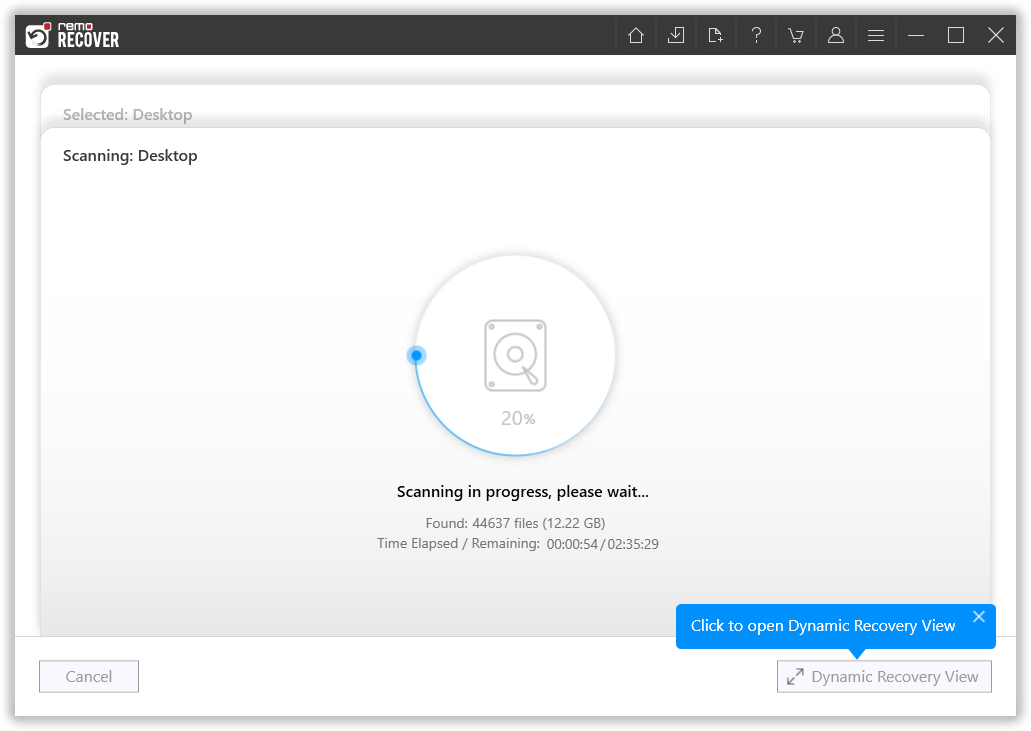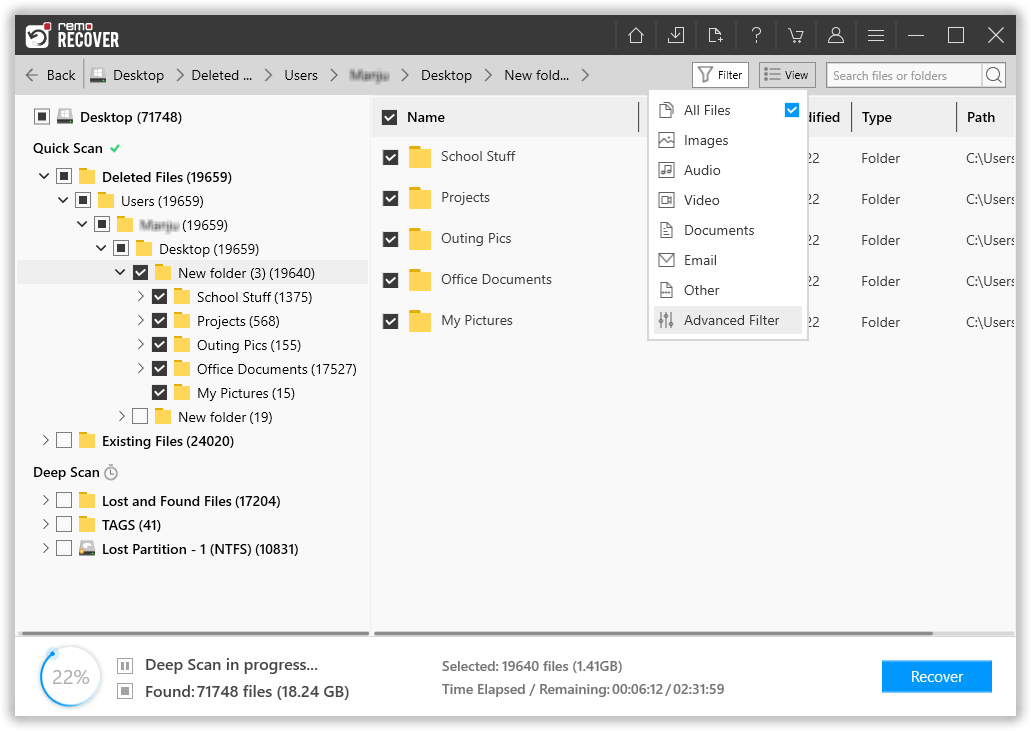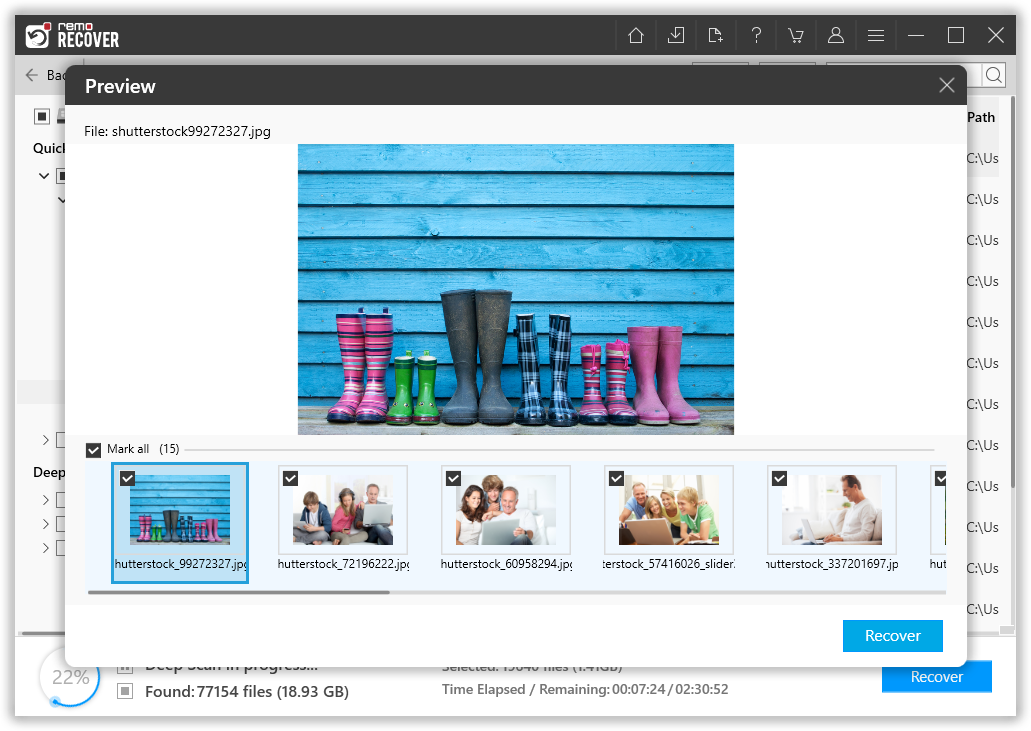Know How to Recover Folders Deleted after Formatting
- The finest solution to unformat data from system hard drive, external HDD, SSD, USB pen drive, memory card, iPods, etc.
- Supports all file systems including FAT16, FAT32, NTFS, NTFS5, exFAT, HFS, and HFS+
- Apart from formatted drives, it also restores corrupted, repartitioned, and reformatted drives
- Even the demo version avails a preview of the retrieved files before activating the license of the software
- Compatible with all editions of Windows and Mac
Folders are commonly created to store vital files. You can store various types of files within a folder including audio, video, document, etc. at your convenience. A folder is really important for those who use it to manage their crucial data. But on certain occasions, users get trapped in a situation where formatting of the storage drive becomes necessary. Continuing to format the hard drive will completely wipe out the data existing on the drive. You may lose vital folders during such instances.
Regain formatted data using the Folder Recovery program
Folder Recovery application helps you to carry out folder restoration after format in a few easy steps. This software is highly integrated with eminent algorithms that restore folders that are lost due to formatting or deletion. This tool makes use of a highly powerful algorithm that scans the storage drive and extracts complete data from it in simple clicks. It proves very useful in the following scenarios of data loss-
- Virus and malware
- Corrupt of the disk file system
- Mistaken format
- Incorrect reformat operations
Apart from these causes, MBR corruption, re-installation of OS without a proper backup, hard drive crash, HD errors, etc. could force you to format the drive. With this, you might lose access to your important documents, songs, pictures, audio, video, etc. Furthermore, you might not possess a relevant backup of the data that is lost with formatting. However, you can run the Folder Recovery program and safely bring back formatted drive files within clicks.
Features of the Folder Recovery program
- Secure unformat: As the tool runs in read-only mode, the original data will not be modified by any chance. The sophisticated algorithm scans and fetches data in a safe manner.
- Supports various drives: This tool enables recovery of formatted from multiple storage devices including- system drives, external HDD, USB drives, SSD, memory cards, memory sticks, iPods, etc.
- Compatibility with Operating Systems: Folder Recovery program is fully compatible with all editions of Windows(Windows 10, 8.x, 7, XP, Vista, & Server editions) and also Macintosh OSX(High Sierra, Sierra, El Capitan, Yosemite, Mavericks, Snow Leopard, Leopard, Lion, Mountain Lion, and Lion).
- File Formats: The program identifies 300+ file type formats. This enables you to regain all types of files such as images, audio, video, documents, zip files, emails, etc.
- Preview data: Upon restoring data from the formatted drive, the software lists the recovered files/folders in two different layouts- File Type View and Data View respectively. The files in the preview window will be sorted on the basis of their filename, size, creation and modification date.
Read more: Steps to restore folders on Windows 7 data that is lost, deleted or corrupt.
Steps to recover files & folders after format:
Step 1: Launch the tool, Select the drive from which you want to recover deleted folders and hit the Scan button. If you can’t locate the drive try clicking on Can’t Find Drive? option on the bottom left corner, this will scan your system to locate the drives that weren’t listed before.

Figure 1: Select the Drive and Click Scan
Step 2: After completion of the Quick Scan process the tool will run into Deep Scan automatically and list all the folders and files in Dynamic Recovery View, Preview the recovered folders and files and verify.

Figure 2: Scanning for Folders
Step 3: Software completes quick scan, and starts with the deep scan to recover more files. After the completion of quick scan, you can find any files you are looking for using the search bar or filters.

Figure 3: Recovered Files after Quick Scan
Step 4: Double click on any file to preview the files, and evaluate the recovery results.

Figure 4: Preview Window
Step 5: Lastly, select a suitable destination path to save the recovered files.

Figure 5: Save Recovered Folders
Additional info: SSD is a high capacity storage device that becomes quite popular nowadays. Due to various reasons, an SSD can get formatted which results in huge data loss. However, you can recover files from a formatted SSD drive in an efficient way with the help of this tool.